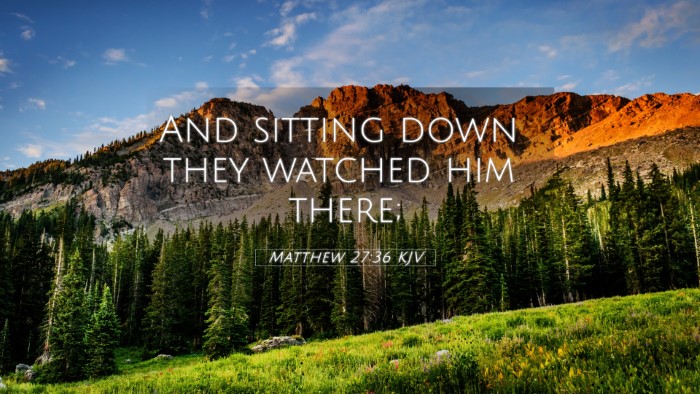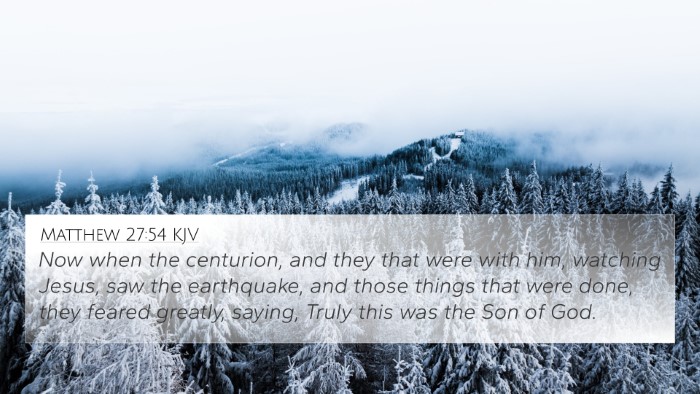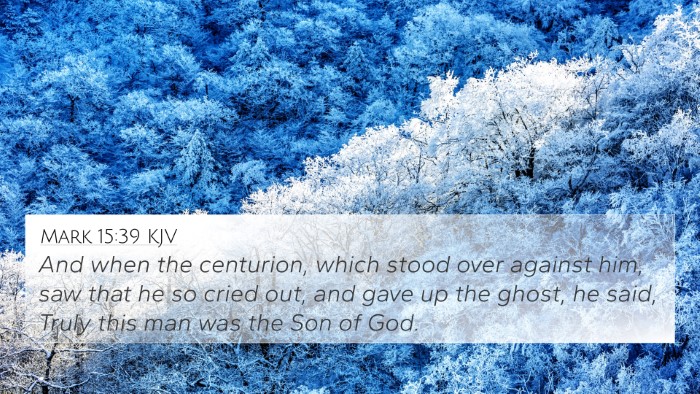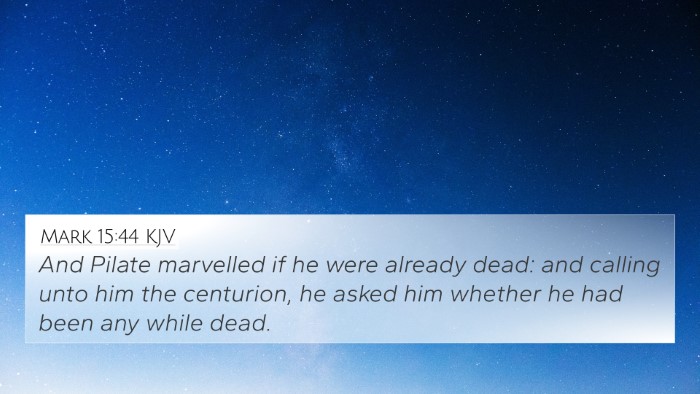Understanding Matthew 27:36
Matthew 27:36: "And sitting down, they watched him there." This verse describes a poignant moment during the crucifixion of Jesus Christ. It illuminates the atmosphere surrounding this significant event and the demeanor of those present.
Contextual Analysis
In the broader context of Matthew 27, this verse follows the severe mistreatment and humiliation Jesus endured. His trial, scourging, and the mocking by soldiers culminated in the act of crucifixion. Public Domain Commentaries offer insight into the gravity of this moment.
Commentary Insights
-
Matthew Henry:
Henry's exposition emphasizes the indifference of the soldiers as they sat, mocking Jesus while performing their positions in what should have been a solemn moment. He points out that their actions reflect the desensitization to violence and the tragic nature of Christ's sacrifice.
-
Albert Barnes:
Barnes draws attention to the purposeful act of watching. The soldiers were not merely bystanders; their gaze was fixated on Christ, signifying a mixture of curiosity and contempt. He notes the fulfillment of prophecy and the significance of Christ's suffering for humanity.
-
Adam Clarke:
Clarke highlights the role of the soldiers in this event. Their actions symbolize the broader human condition in the face of suffering. The indifference displayed serves as a crucial moment for reflection on how society treats its saviors and the consequent moral implications.
Thematic Connections
This verse can be linked to several themes throughout the Bible that explore the nature of suffering, mockery, and the fulfillment of prophecy. Here are some key thematic connections:
- Isaiah 53:3: Prophetic references to the suffering servant, illustrating the despised and rejected nature of Christ.
- Psalm 22:7-8: A depiction of mockery faced, linking the Old Testament to the New Testament's crucifixion narrative.
- Luke 23:35: The rulers scoff at Jesus, showing continuity in human behavior towards those they misunderstand.
- John 19:23-24: Soldiers casting lots for Jesus' garments, emphasizing the fulfillment of scripture even in moments of cruelty.
- Matthew 5:10-12: The Beatitudes remind believers of the blessing found in persecution, providing comfort amidst suffering.
- 1 Peter 2:23: This passage explains how Christ responded to suffering, emphasizing His non-retaliatory nature.
- Revelation 1:7: All shall see Him whom they pierced, tying back to the moment of indifference at the cross.
- Romans 5:8: Christ died for the ungodly, underscoring the sacrificial nature of His death and its implications for humanity.
- Hebrews 12:2: Focusing on Jesus, the author and perfecter of faith, who endured the cross despite its shame.
- Philippians 2:8: Jesus humbled Himself, further connecting with the nature of His suffering as described in Matthew 27.
Cross-Referencing and Further Study
To gain a deeper understanding, employing tools for Bible cross-referencing can enhance insights into Matthew 27:36. Utilizing resources like a Bible concordance or a cross-reference Bible study guide facilitates the exploration of themes and connections between various scriptures.
Engaging in comparative Bible verse analysis, particularly connecting the Gospels' accounts, enriches the study of this verse. For those seeking to understand the inter-Biblical dialogue, examining related themes across both the Old and New Testaments can reveal the profound continuity of God's message.
Conclusion
Matthew 27:36 provides a striking glimpse into the events surrounding the crucifixion of Jesus. The observations of those present reflect both a profound sorrow and the collective apathy of humanity toward divine suffering. By exploring cross-references and thematic connections, believers can find greater understanding of this pivotal moment in Christian faith.





